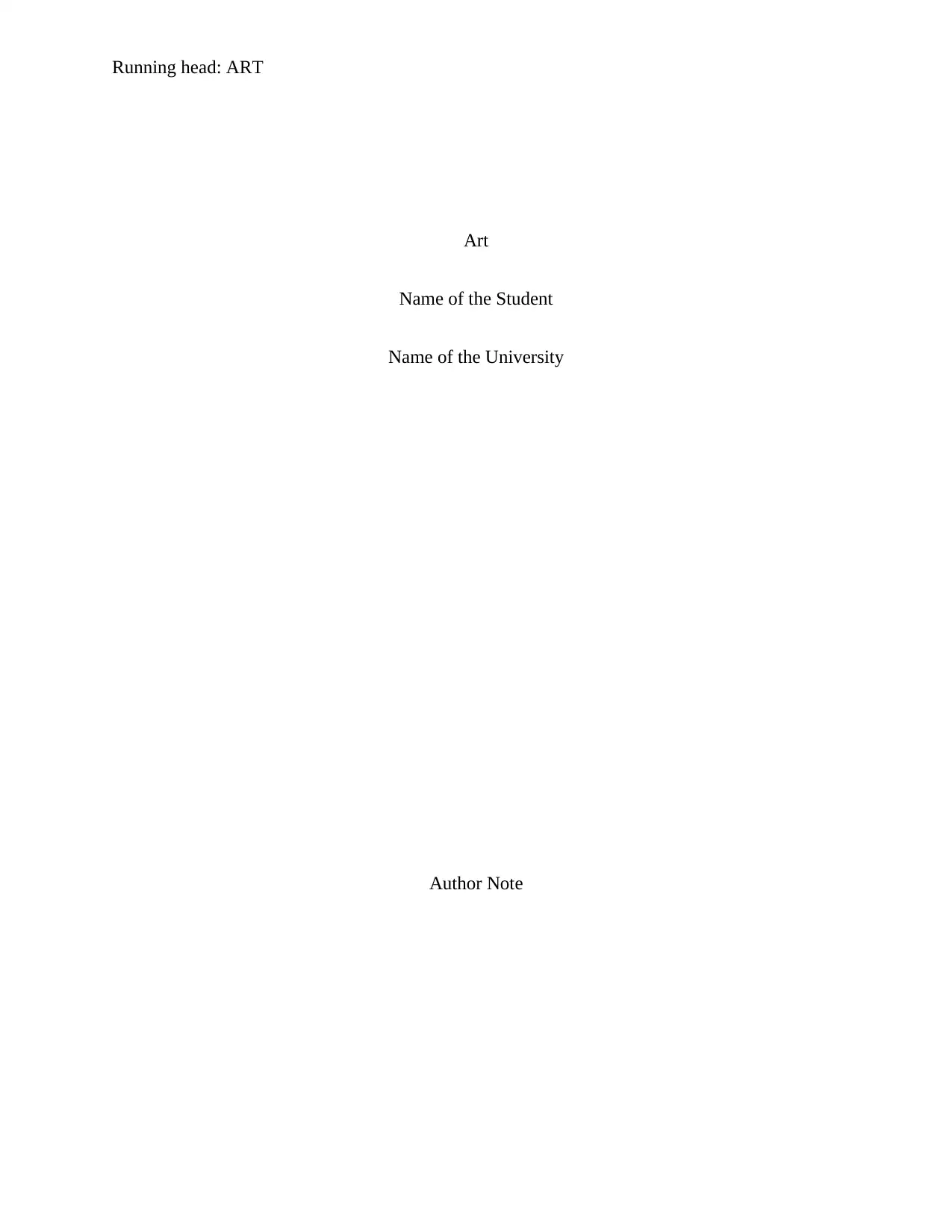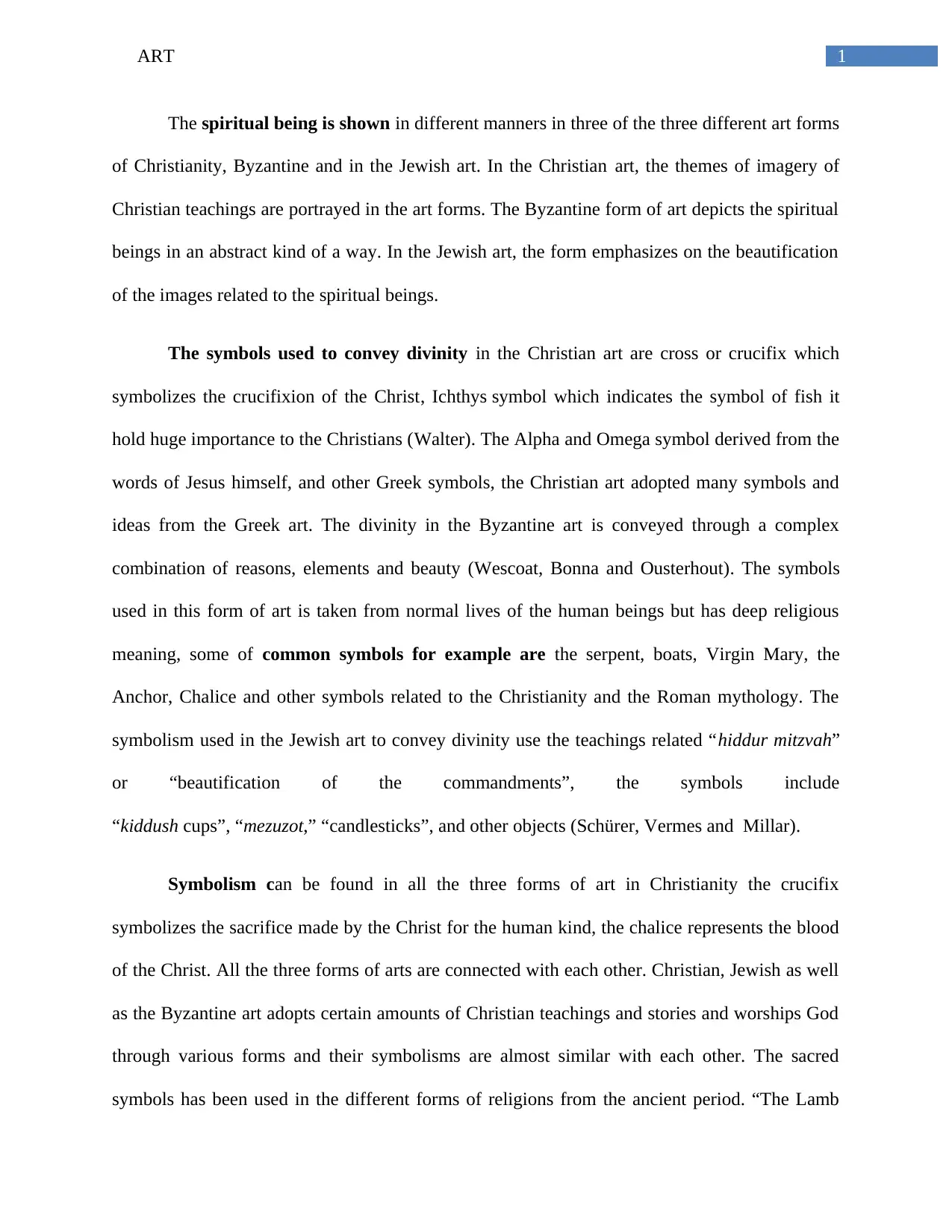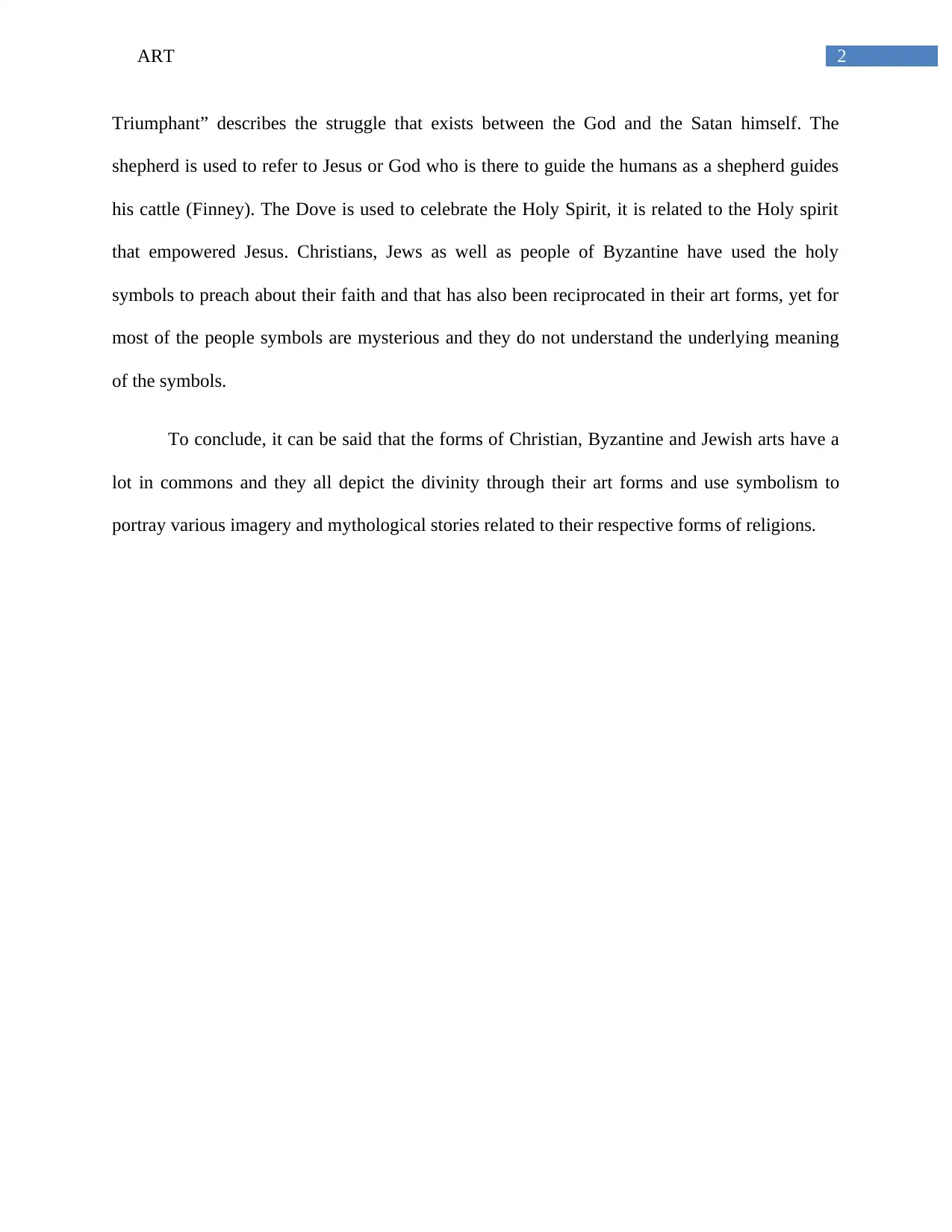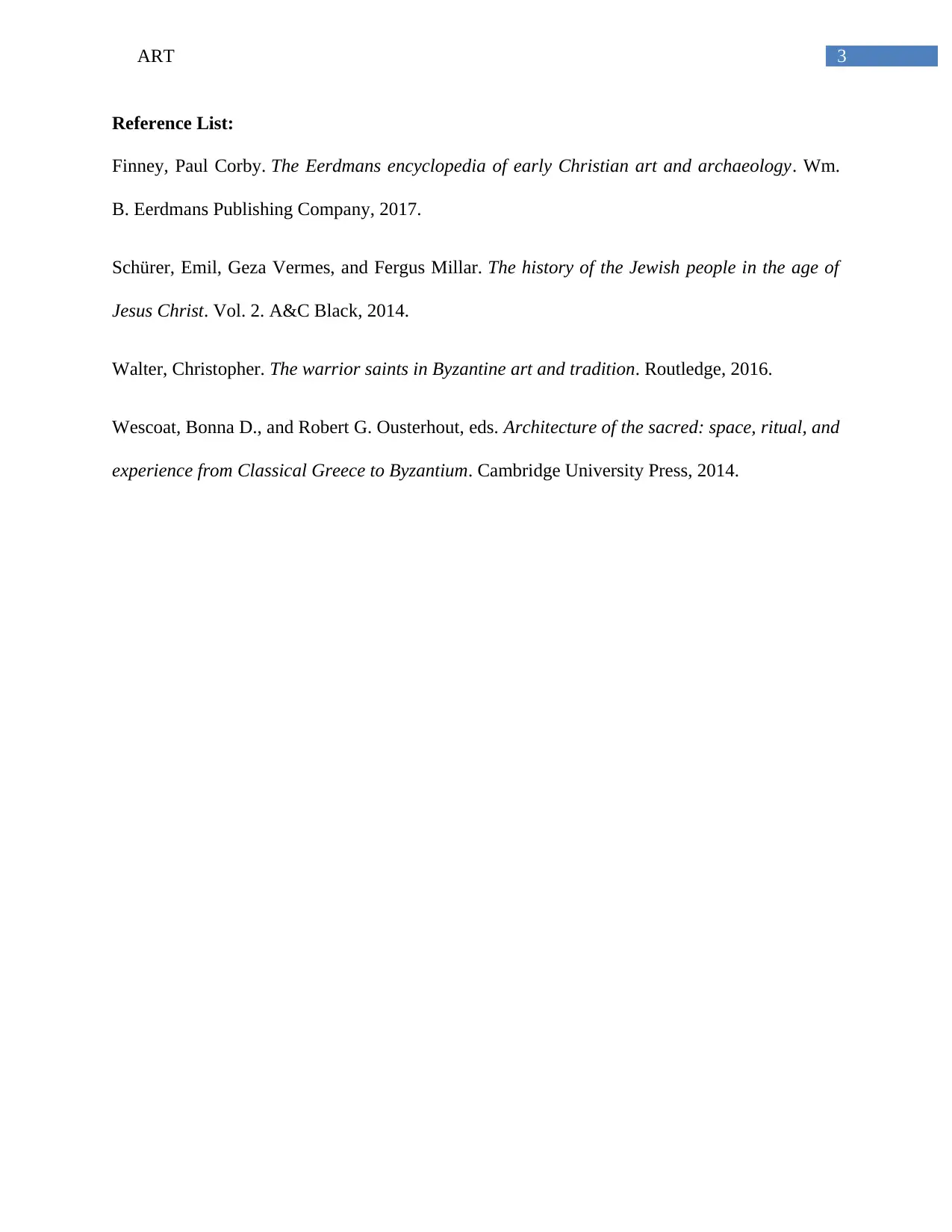Exploring Symbolism in Christian, Byzantine, and Jewish Art Forms
VerifiedAdded on 2020/05/28
|4
|683
|288
Essay
AI Summary
This essay provides a comparative analysis of Christian, Byzantine, and Jewish art forms. It explores the symbolism, religious themes, and cultural contexts of each tradition. The study highlights the use of specific symbols such as the cross, Ichthys, and the Alpha and Omega in Christian art, the abstraction and symbolic meaning of the Byzantine art, and the use of “hiddur mitzvah” in Jewish art. It also examines the commonalities, such as the depiction of divinity and the use of symbols to convey religious teachings and mythological stories. The essay references various sources to support its claims and concludes by emphasizing the shared aspects and unique characteristics of these art forms.
1 out of 4





![[object Object]](/_next/static/media/star-bottom.7253800d.svg)